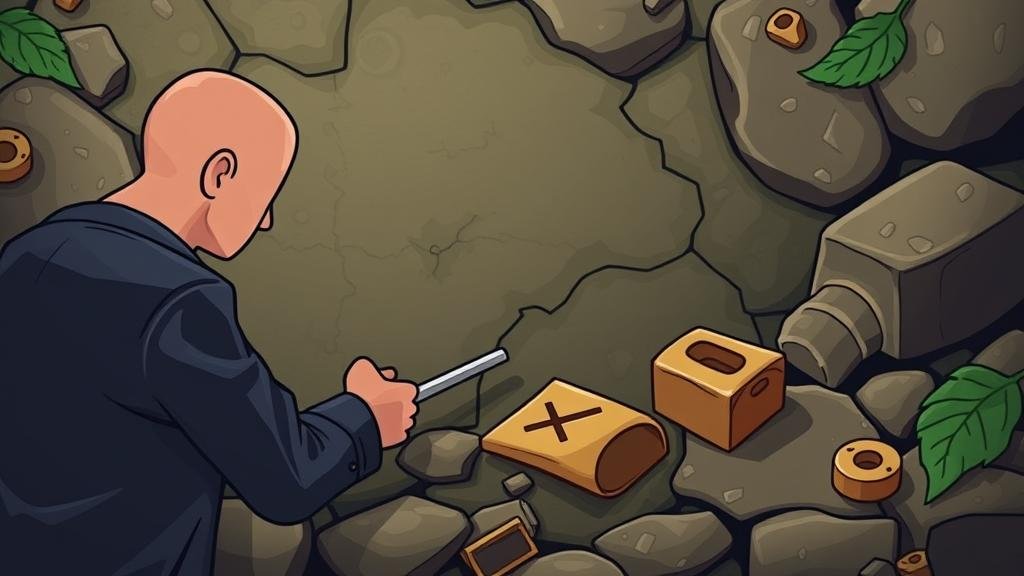How to Use Overlooked Details in Clues to Find Treasure Starting Points
How to Use Overlooked Details in Clues to Find Treasure Starting Points
The quest for treasure has captivated human imagination for centuries, igniting tales of adventure, speculation, and sometimes even tragedy. In the realm of treasure hunting, the ability to decipher clues accurately can significantly enhance one’s success rate. Often, the key to finding valuable treasures lies in overlooked details embedded within these clues. This article examines strategies for identifying and leveraging such details to pinpoint treasure starting points more effectively.
Understanding Treasure Clues
Clues serve as the breadcrumbs leading seekers to hidden treasure. They can manifest in various forms, including maps, historical texts, folklore, or even artifacts. Understanding the context of these clues is crucial for interpretation. Just as a detective studies every nuance in a crime scene, a treasure hunter must meticulously analyze each component of the clues they encounter.
- Geological Indicators: Natural formations or geological features often provide essential context about a treasure’s hiding place.
- Historical Context: Knowledge of the time period related to the treasure can influence how clues are interpreted.
- Cultural Significance: Folklore and local legends may contain vital hints that are easy to overlook.
Identifying Overlooked Details
Overlooked details can take many forms, and recognizing them requires a keen eye and critical mindset. Here are several strategies for uncovering these details:
- Close Examination: Always begin by scrutinizing the physical aspects of a clue closely. Small marks, scars, or differences in texture on maps or artifacts may signify deeper meanings or directions.
- Contextual Analysis: Analyze the surrounding references or landscapes mentioned in the clues to ascertain their potential significance. For example, a clue referencing a “three-headed tree†might relate to specific local flora identifiable through research.
- Cross-referencing: Original maps against current geographical information systems (GIS) may reveal discrepancies pointing toward buried items or hidden paths.
For example, consider the case of the Beale Ciphers, a set of encrypted texts allegedly providing directions to a buried treasure in Virginia. Many seekers ignored the historical context and failed to recognize the importance of the local century-old landmarks described in the ciphers. Those who examined the local geological features were able to pinpoint possible excavation sites with greater accuracy.
The Power of Language
The language used in clues can offer a wealth of information. Analyzing idioms, local dialects, and even etymology may unearth hidden meanings. Often, the words selected by the author or creator of the clue were deliberate and intended to convey more than just direct instructions.
- Idiomatic Expressions: Many cultures embed idioms that may reflect hidden locations. For example, “under the light of the full moon†could indicate specific seasonal timing for the search.
- Acronyms and Initials: Seemingly random letters or patterns in clues could encode vital directional information, requiring deciphering methods akin to those used in cryptographic analysis.
Real-World Applications
Utilizing overlooked details in treasure hunting is not merely theoretical; practical examples abound in history. Consider the “Lost Dutchman’s Mine,†a legendary gold mine located in the Superstition Mountains of Arizona. Many treasure seekers have failed to find it due to overlooking essential natural markers like the “Superstition Peaks,†described in local folklore. Others have succeeded by paying attention to peculiar details in reported sightings, notably certain rock formations or unique vegetation.
Actionable Takeaways
To maximize the potential of your treasure-hunting endeavors by using overlooked details as treasure starting points, consider the following:
- Conduct a thorough examination of all clues, paying attention to minor details.
- Contextualize clues using historical and geographical knowledge to enhance your interpretations.
- Don’t disregard the significance of language; analyze every word and expression included in the clues.
- Engage with local communities or experts who may offer insights not recorded in historical documents.
By applying these strategies, treasure hunters can elevate their craft from mere chance exploration to a more analytical and rewarding experience. nuances embedded within clues might lead to untold riches waiting to be uncovered.



